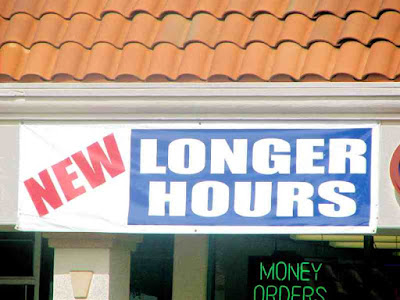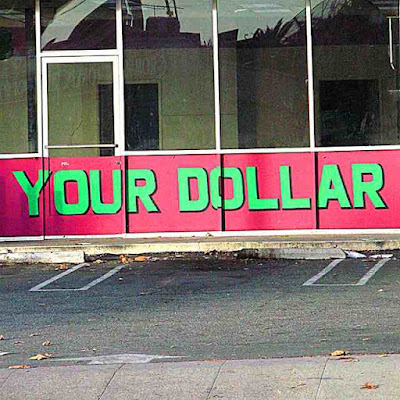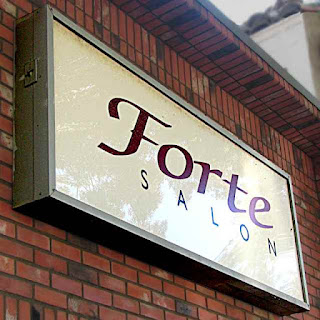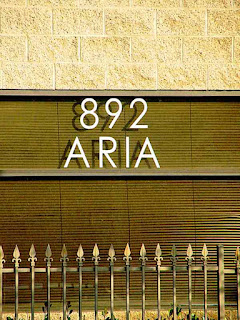No musician admits it out loud and a few probably don't even admit it to themselves, but every musician wants to get into the history books. I've seen composers open a new book from the back just to look for their name in the index. I do that myself sometimes.
I'm very proud that I got mentioned even once in Frank Zappa's autobiography. (On page 175 in case you run across a copy because Frank didn't believe in indices.)
Recently I was contacted by Charles Sharp (also known as
C. Sharp). He wanted to interview me for his doctoral dissertation. Here's how he described it:
[It is] ostensibly about avant-garde jazz in Los Angeles but it has become increasingly about the intersection of various different genres of experimental music in Los Angeles.
One of those intersections involved the ICA, the Independent Composers Association, a group in which I was active in the early 1980s.
You can read several Mixed Meters articles about ICA. (MM is the only place on the Internet you can read anything about ICA, alas.)
I answered Charles' questions as best my memory would allow. A year passed. Charles finished his dissertation, charmingly entitled
"Improvisation, identity, and tradition: Experimental music communities in Los Angeles". He has since defended it against all comers and earned some letters after his name which entitle him to a chance of being hired for menial college teaching positions.
The dissertation is 500 pages long! I immediately searched it for my name and found a gratifying number of mentions. Thankfully the quotes Charles picked didn't make me look like a complete idiot. It's not online at the moment but if you want to read it you should contact him. Charles created a blog to accept comments
here which might be a good place to leave him a message.
The story Charles tells is important. It's about creative music right here in Los Angeles. Unfortunately, in experimental music, what happens in L.A. stays in L.A. This telling should help delineate a historical tradition few people know much about. Even those of us who witnessed parts of it don't know the whole story. People from elsewhere will be surprised.
After an academical introductory chapter (in which the word
hermeneutics confused me repeatedly) it's a pretty easy read. Charles starts off with
Ornette Coleman, not often thought of as an L.A. musician. He left here for New York in 1959 after recording
The Shape of Jazz to Come. Three Los Angeles jazz musicians,
pianist Horace Tapscott,
cornetist Bobby Bradford and
clarinetist John Carter are the backbone of the story.
I was acquainted with John Carter, heard him play a bunch of times and even got to play with him once, if only in private. He was a nice and genuine person. His cycle of 5 albums,
Roots and Folklore: Episodes in the Development of American Folk Music, is the centerpiece of Charles' story. I could have learned a lot from John - had I thought to pay more attention.
Sharp discusses the music of Tapscott, Bradford and Carter :
...these musicians had preunderstandings, which were informed by bebop and also the developing music of free jazz. Their music suggested different realities and possibilities. If racism, which was a systemic part of urban planning, policing, and public policy, was a reminder that black people were not fully valued as individuals, the music was a reminder of the importance of individuals and the power of community. ... Their music was supposed to sound unique, different every time, and challenge the listeners; aspects that seldom result in broad mass appeal. ... As their music was understood, it expanded the horizons of the listeners and new communities would emerge. (p.126-7)
Charles writes a lot about communities - little groups of like-minded people within which music could take on some meaning. Telling how these groups arose and interacted with each other and eventually disappeared makes the story interesting.
For example, I found the early histories, starting in high school, of drummer
Alex Cline, guitarist
Nels Cline and synthesist
Lee Kaplan (who ran an important concert series at a little dump pretentiously called the Century City Playhouse) fascinating. My buddy
Vinny Golia gets a lot of space. (You can hear ancient recordings by an improv trio of myself, Vinny & flutist
Anne LaBerge in
this MM article.) Others (like
Bill Roper,
James Grigsby,
Titus Levi,
Kraig Grady, Lynn Johnston,
Will Salmon) who I know or worked with get space as well.
Charles puts a lot of different things into his narrative. A chapter about punk rock. A chapter about the various Los Angeles city-wide arts festivals (which I alluded to in
my recent post about opera.) Dr. Sharp takes the story right up to the present - long after I dropped out.
Having lived in Los Angeles for nearly 35 years, first as an active participant in the local experimental music scene and then an observer of same, I think this dissertation deserves to be widely read. Creative musicians, non-creative musicians, music fans of all kinds and even music critics will find it interesting. And they might just realize that Los Angeles is not quite the creative wasteland we pretend to be.

To accompany this post I've gone through the chaos of my archives and selected some flyers, newspaper clippings and concert programs which relate one way or another to Charles' subject matter. All of them mention my name somewhere - why else would I have kept them? But most are more interesting because of the others involved.
The material is in two formats. One is a 16 meg. PDF of scans of each item - get it
here. The other is the same material only converted to searchable text. Read that one
here.Here's a list of the items included:









